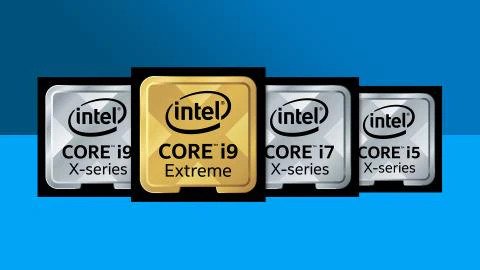Intel processors have been a staple in the tech industry for many years now, powering devices from laptops and desktops to smart phones and tablets. In this article, we explore all of the different Intel processors that are currently available, from the Core i3 to the Core i9. We also take a look at what features are available on each model and how they might be useful to you as a user or as a business.
What is an Intel Processor?
Intel processors are the brain of your computer. They’re the heart of your computer, and they help your computer run faster, smoother, and smarter. They’re also essential for playing the latest games, viewing HD videos, and working on high-powered photos and graphics.
Most people think of Intel processors as the ones inside their laptops or desktop computers. But there are also Intel processors in phones, tablets, gaming consoles, smart TVs, cars, and smart appliances.
An Intel processor is a microprocessor made by Intel Corporation. It’s the core component of a computer system and it helps your computer run faster, smoother, and smarter. An Intel processor is designed to handle complex tasks quickly so you can work and play without interruption.
To choose the right processor for your needs, start by considering what kind of computer you want to build or buy. Do you want a laptop or a desktop? Do you need an Intel Core i7 or an Intel Core i3? Once you know what kind of processor you need, look at our list of available processors to find the best one for your needs. You can also consult reviews from trusted
History of Intel Processors
Intel processors are among the most popular in the world. They have been powering computers for over three decades, and they continue to do so today. This article will explore the history of Intel processors, starting with the very first ones.
Intel processors have been in production for over 35 years. Intel began as a computer manufacturer in 1968, and its first processor was the 8008. Intel processors are now found in almost every type of computer, including laptops, desktops, servers and even cars. Intel has introduced many processors over the years, but the most famous are probably the Pentium and the Core series. In this blog post, we’ll take a look at the history of Intel processors and their impact on computing.
Intel’s 8008 Processor
The Intel 8008 was the first processor produced by Intel. It was introduced in 1968 and was intended for use in small computers. The 8008 had 8 kilobytes of memory, and it was able to run at a rate of 1 MHz. The 8008 was followed by the 8086 in 1978, which had 16 kilobytes of memory and ran at 2 MHz.
Intel’s 8086 Processor
The Intel 8086 was the first commercially available microprocessor. It was introduced in 1978 and had 8 kilobytes of memory. The 8086 was followed by the 80286 in 1985, which had 16 kilobytes of memory and ran at 2 MHz. The 80286 was also the first microprocessor to support protected mode.
Intel’s 80386 Processor
The Intel 80386 was the first microprocessor to support 32-bit integer arithmetic and full-fledged protected mode. The 80386 also had a MMX instruction set and a SSE (Streaming SIMD Extensions) instruction set. The 80386 was released in 1989 and became widely used in personal computers.
Types of Intel Processors
Intel processors can be classified into three categories: desktop, mobile, and embedded. desktop processors are the most common type and come in a variety of models from low-power to high-power. mobile processors are designed for use in mobile devices such as smartphones and tablets, while embedded processors are used in a variety of industrial and commercial applications.
There are three types of Intel processors: the Core i7, Core i5, and Core i3. The Core i7 is the most powerful, followed by the Core i5, and then the Core i3. The different types of processors offer different features and benefits. Here’s a breakdown of each type:
Core i7 Processors:
The Core i7 is the most powerful processor available from Intel. It has eight cores and can handle multiple tasks simultaneously. It’s also a great choice if you need to do complex calculations or graphics work.
Core i5 Processors:
The Core i5 is a mid-range processor. It has four cores and can handle basic tasks quickly. It’s a good choice if you need to do things like browse the internet, make simple calculations, or play some basic games.
Core i3 Processors:
The Core i3 is an affordable processor option. It has two cores and can handle basic tasks quickly. It’s a good choice if you just want to use your computer for browsing the internet, reading emails, or using basic programs.
The Main Features of Intel Processors
Intel processors have become the go-to choice for computer users around the world because of their incredible performance and affordability. There are a variety of different types of Intel processors available, each with its own set of features and benefits. In this article, we will take a closer look at the main features of Intel processors, highlighting some of the most important ones.
First and foremost, all Intel processors are incredibly powerful. They offer top performance in a wide variety of tasks, from basic computing tasks like browsing the web and working on documents to more demanding tasks like playing high-end games and editing videos. Additionally, they are able to handle multiple tasks simultaneously with ease, making them perfect for multitasking use.
Another key feature of Intel processors is their energy efficiency. They are designed to save energy when not in use, which can help you save money on your energy bill overall. This is especially important if you are looking to reduce your carbon footprint or make your computer more environmentally friendly.
Overall, Intel processors offer an incredible range of features and benefits that make them perfect for use in all kinds of computers. If you’re looking for top performance and energy efficiency in your next computer purchase.
Conclusion
Intel processors have become a staple in the high-end gaming and professional workstation markets. They offer great performance, features, and security at an affordable price. In this article, we will be taking a detailed look at each of the Intel processor lines, from the low-power Atom to the top-of-the-line Xeon. We will also be providing information on how to choose the right one for your needs, as well as tips for optimizing your system performance. So whether you are looking to upgrade your current desktop or build a new one, be sure to check out our complete guide to choosing an Intel processor!








